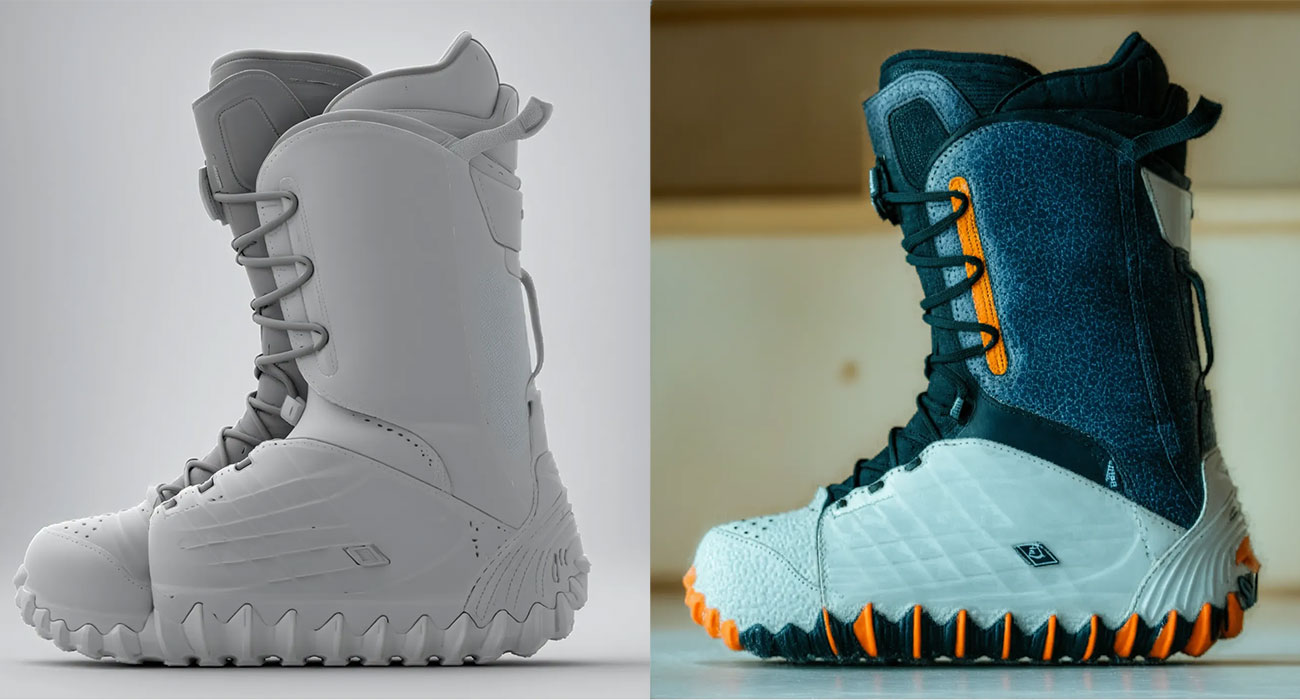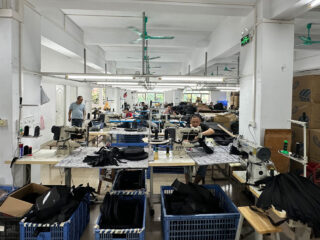Artificial intelligence (AI) has quickly become one of the most talked-about tools in design and manufacturing. For industries like soft goods design and development—covering everything from bags and luggage to baby products, sports equipment, medical devices, footwear, and automotive accessories—AI promises to make processes faster, more accurate, and more creative. But there’s also a growing misconception: that AI can fully replace the human craft of developing a real physical product.
At studioFAR, we see AI as a powerful partner in the soft goods product development process—but not a replacement for thoughtful design, soft goods prototyping, and human-led design for manufacturing (DFM) expertise. Here’s how AI adds value, why it saves time, and why human designers remain essential.
How AI Accelerates Soft Goods Design
One of the most valuable contributions AI brings to soft goods development is in the early stages of ideation. AI tools can generate hundreds of design directions within minutes, helping teams explore shapes, materials, and construction methods faster than ever before. For example, a client looking to create an innovative EV automotive accessory or a specialized sports equipment soft good can now visualize multiple concepts in a fraction of the time it used to take.
At studioFAR, we’ve invested time in mastering these AI platforms so our clients benefit from quicker turnarounds and richer creative exploration. Whether it’s testing out different forms for a baby carrier design or experimenting with new modular features in travel luggage, AI helps expand the possibilities.
But here’s the critical truth: those AI-generated concepts are only starting points. They don’t replace the skilled eye of a designer or the technical process required to move from digital sketch to physical prototype.
Why Prototyping Still Matters in the Age of AI
Even the most compelling AI renderings can’t predict how a fabric will drape, how a seam will withstand stress, or how a zipper will function under repeated use. This is why soft goods prototyping remains at the heart of what we do.
At studioFAR, prototyping is where ideas meet reality. We build and test physical models to evaluate comfort, durability, and usability. For example, in medical soft goods development, prototypes ensure that products not only meet regulatory standards but also work effectively in real-world conditions. In sports and exercise equipment, prototypes confirm performance and ergonomics. AI might help accelerate the sketch, but prototyping validates the product.
Skipping this step would be like publishing a book after writing only an outline—it’s incomplete, and it risks costly mistakes in manufacturing.
AI in Tech Pack Creation and Design for Manufacturing
Another area where AI is helping is in generating smarter documentation. Tech packs—the detailed blueprints manufacturers use to bring a design to life—are often time-consuming to prepare. With AI-assisted tools, parts of this process can be automated, helping create more accurate specifications and reducing errors.
But here’s where experience matters: a tech pack is only as good as the person writing it. At studioFAR, we don’t hand the job over to AI entirely. Instead, we combine AI-generated outputs with our hands-on knowledge of stitching, material selection, hardware, and supply chain considerations. This ensures that when the design enters manufacturing, the details align with real-world production capabilities.
This blend of AI with design for manufacturing (DFM) expertise saves clients both time and money—avoiding missteps that could lead to defective products, wasted inventory, or missed deadlines.
The Human Craft AI Can’t Replace
The biggest misconception about AI in design is that it can “skip steps” in the product development process. But developing a successful soft goods product is still a craft—a balance of creativity, engineering, and practical problem-solving.
AI can’t sit with a fabric swatch and feel its weight. AI can’t sew a prototype and test it under load. AI can’t navigate global tariffs, factory minimums, or the logistics of scaling from one prototype to thousands of units ready for sale. That’s where human experience comes in.
At studioFAR, our strength lies in bridging the gap between AI’s speed and the rigor of physical product development. We’ve spent decades working across industries—baby soft goods, EV automotive accessories, exercise equipment, wearables, and more—and we know what it takes to translate a vision into a product that works in the market.
Why StudioFAR Invests in AI (and Why That Matters for Clients)
Our investment in AI isn’t just about chasing trends. It’s about delivering more value to clients: faster exploration, smarter documentation, and better-prepared designs for manufacturing. But we always emphasize that AI is only one tool in the process. The backbone of product development remains soft goods prototyping, tech pack creation, design-for-manufacturing, and physical testing.
For our clients, this means they get the best of both worlds: the cutting-edge efficiency of AI tools combined with the grounded expertise of a seasoned design team led by Fernando A. Robert, director and owner of studioFAR.
Whether you’re launching a new baby product, developing sports soft goods, designing accessories for the growing EV market, or creating innovative medical wearables, our process ensures that your idea moves from concept to production with fewer risks and more confidence.
Final Thoughts
AI has changed the way we approach soft goods design and development, but it hasn’t replaced the essential craft of bringing physical products to life. At studioFAR, we use AI as an accelerator—never as a shortcut. By combining advanced digital tools with decades of hands-on experience in soft goods prototyping, tech pack creation, and design for manufacturing, we help clients move from concept to market-ready products with speed, precision, and creativity.
If you’re ready to explore how AI-enhanced soft goods development can help your business, studioFAR is here to guide you every step of the way.
Contact Fernando A. Robert, Director of StudioFAR, and let’s discuss how we can bring your baby product idea to life. Feel free to schedule a call here:




